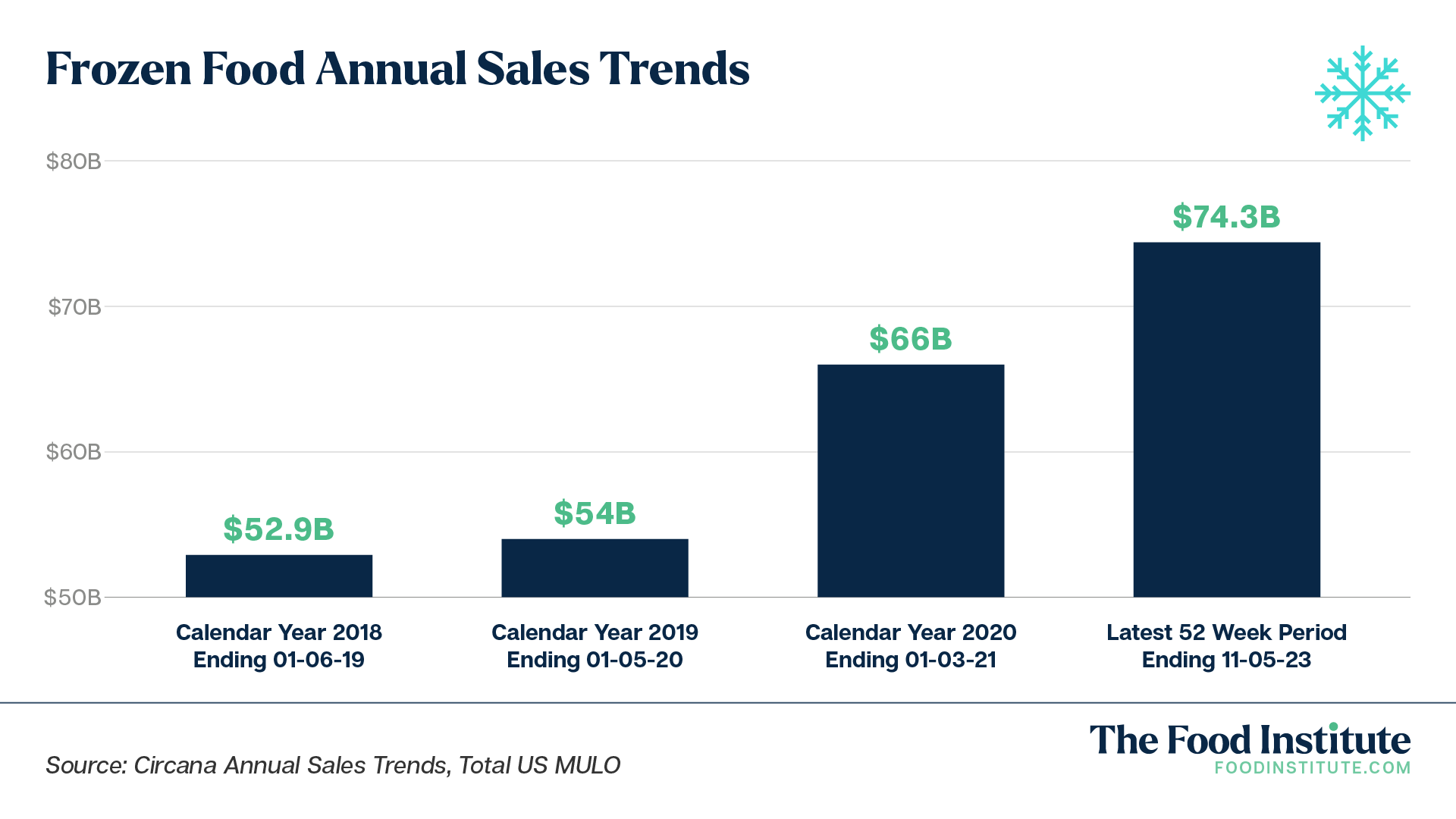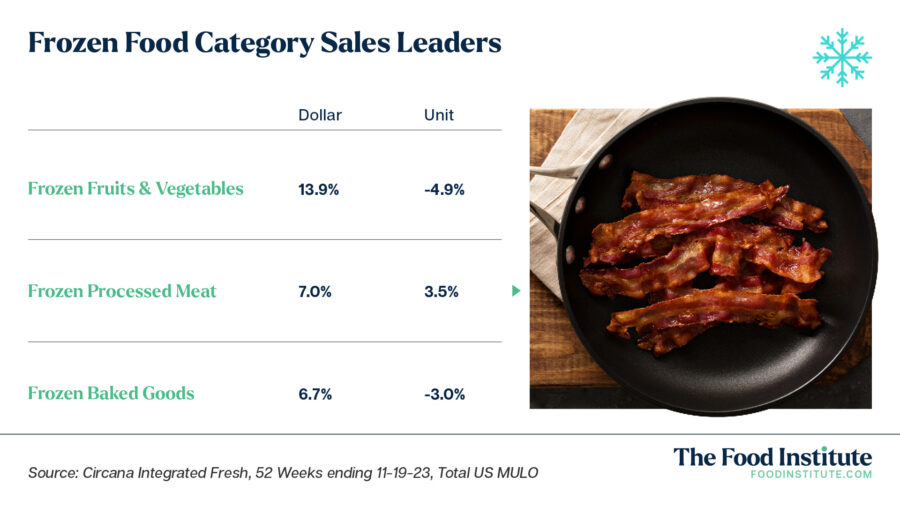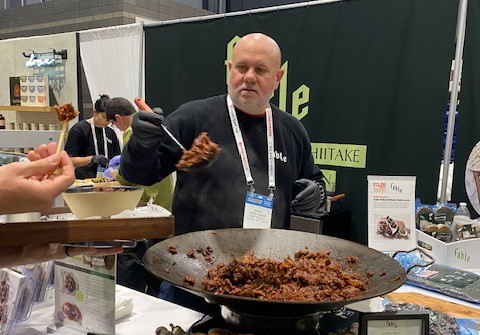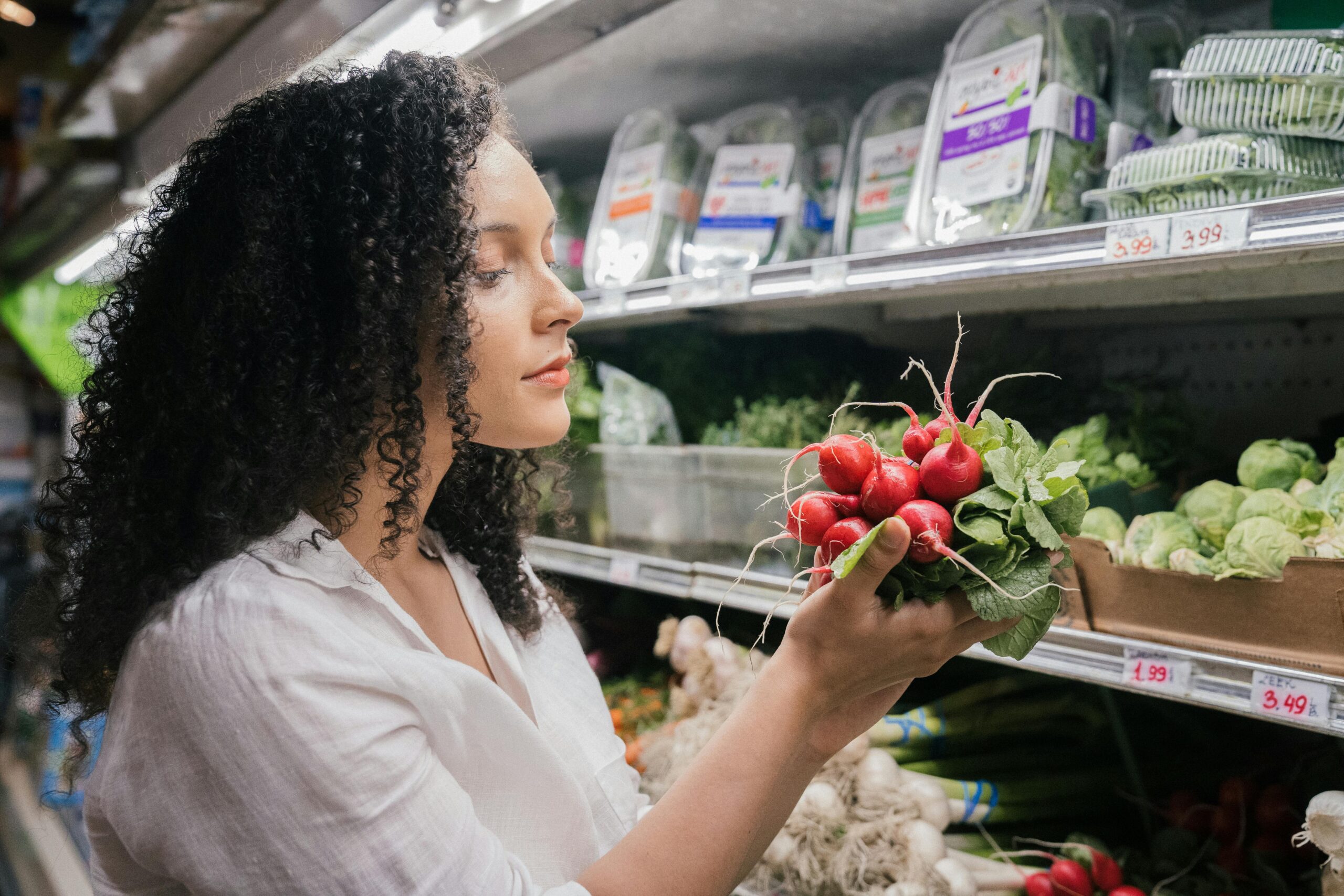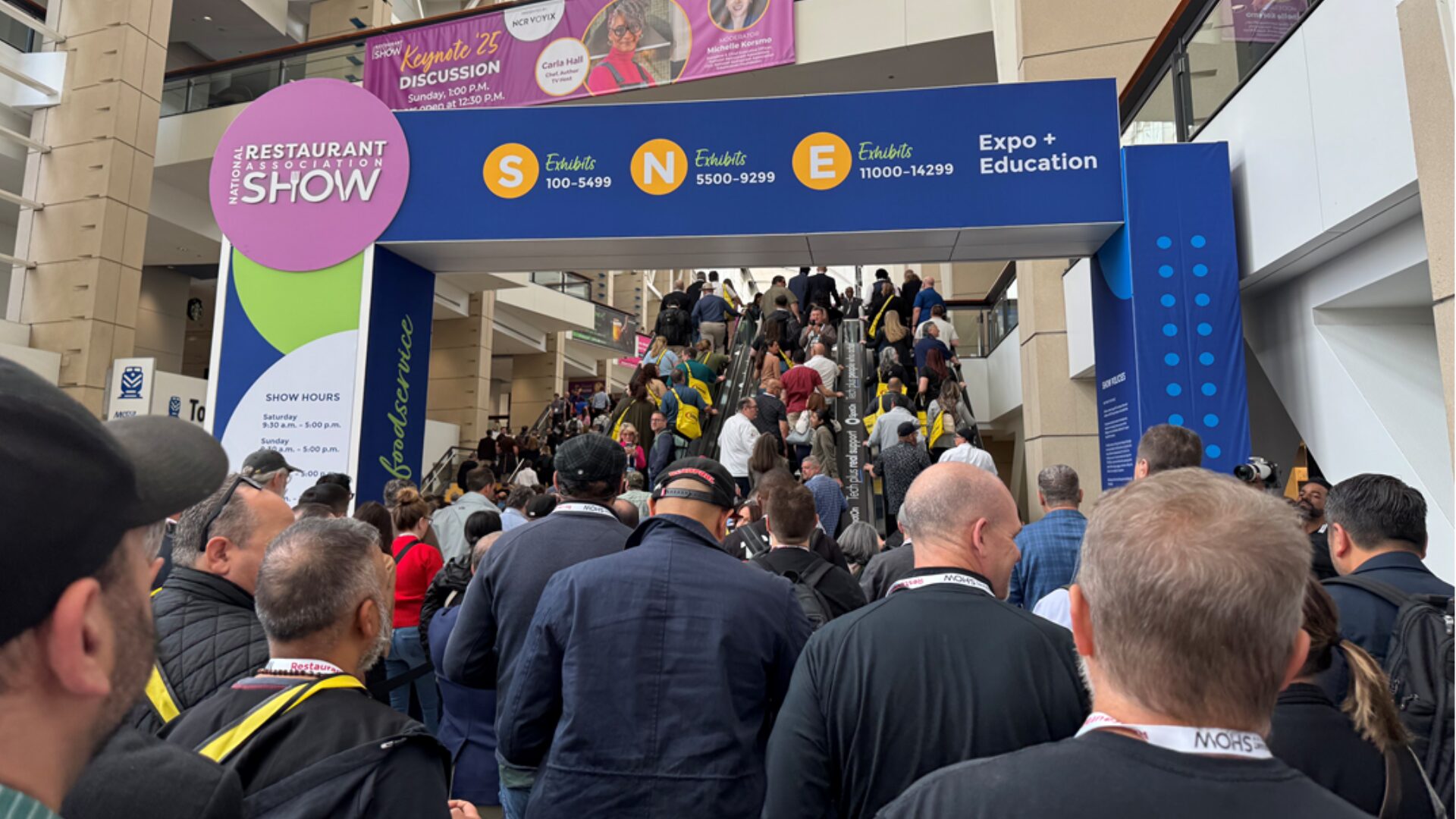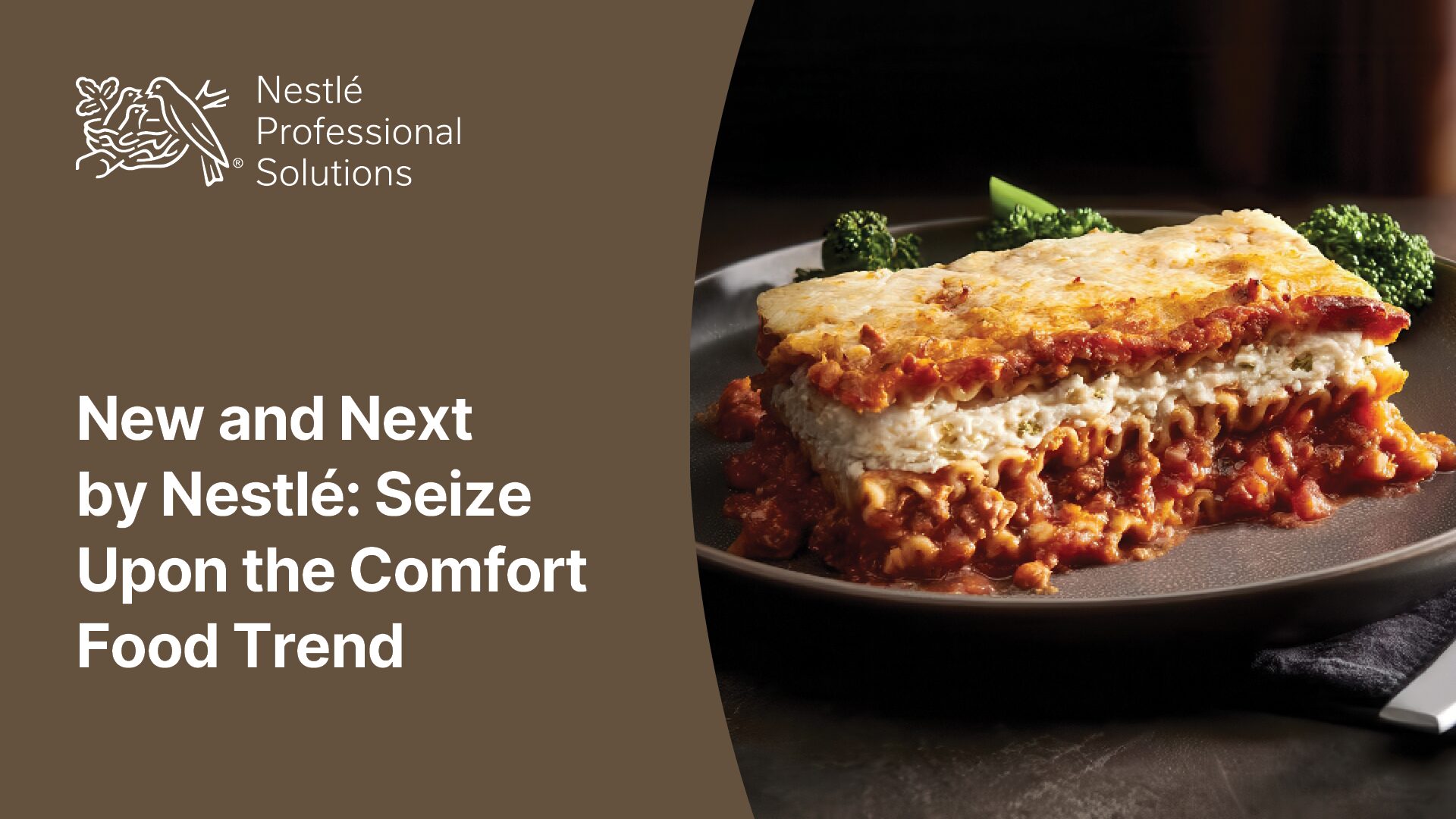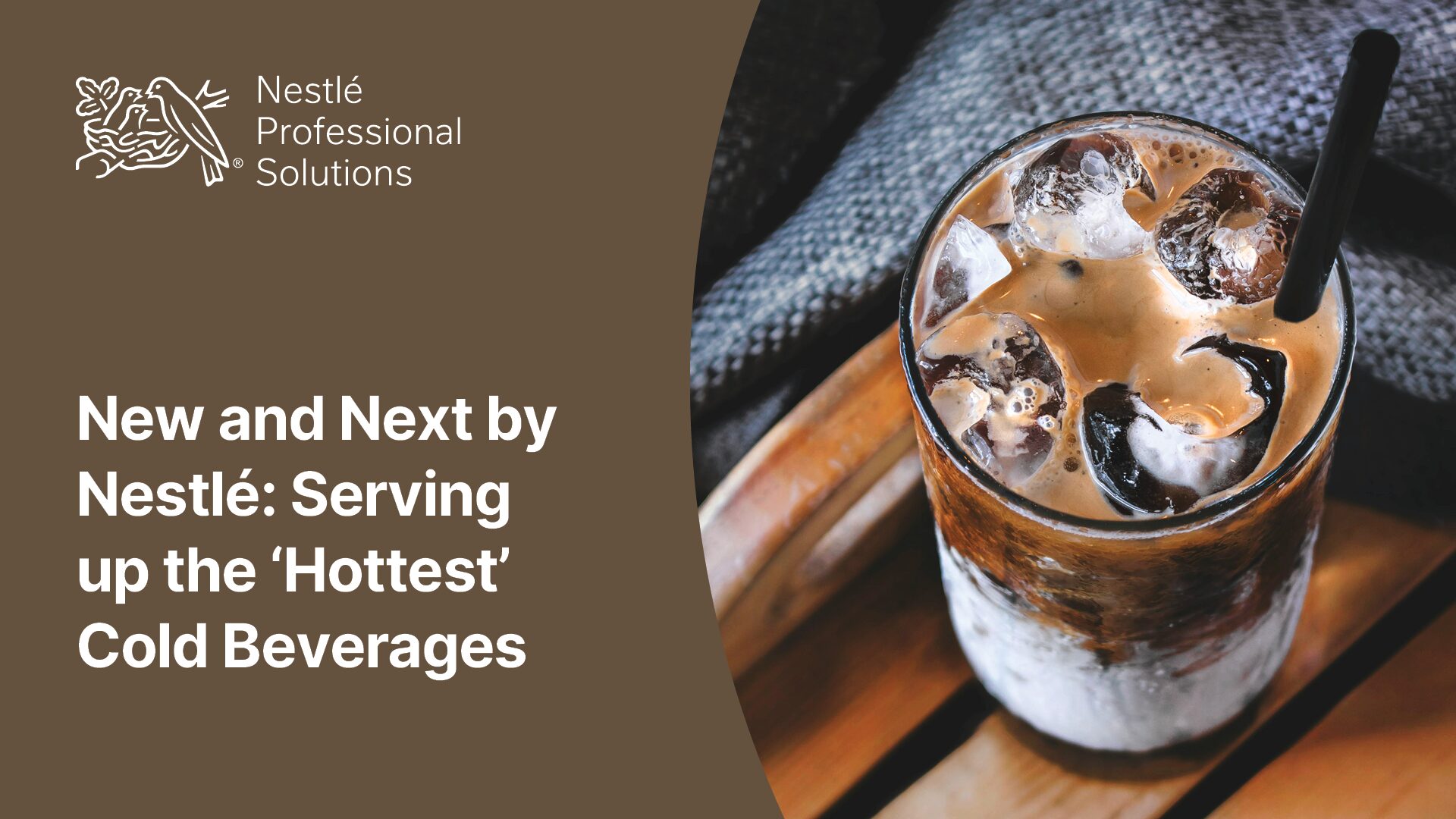After years of economic upheaval, frozen food remains a beacon of convenience, innovation, and at times, affordability. Which categories and brands are in high demand as the new year approaches?
“Frozen food sales have increased by $20 billion since 2019, but unit sales have returned to pre-pandemic levels,” Anne-Marie Roerink, CEO of 210 Analytics, told The Food Institute. “Despite inflation, cost continues to be a strong suit for frozen food, at least in part due to the no/low waste factor in comparison to fresh.”
Category Snapshot
Per Circana, dollar sales for frozen food reached $74.2 billion in the 52-week period ending November 19. Inflated prices continue to prop up year-over-year (YOY) dollar gains (3.7%) while putting pressure on unit sales (-4.2%).
Much like total store, frozen food has witnessed significant inflation over the past four years. Comparative unit sales remained relatively consistent from 2019 to present, with the exception of a 14.3% spike in the 2020 calendar year.
In response to steady demand and innovation, many retailers are doubling down on frozen by adding an extra aisle or utilizing standalone freezers to bring frozen foods into different areas of the store.
According to Roerink, optimizing purchases when shoppers are in the aisle is paramount, as most frozen food consumers purchase a limited variety of items.
“Introducing [shoppers] to new types of frozen food offerings can be a way to recoup some of the lost units over the past few years,” said Roerink. “Frozen food is experiencing fewer trips compared to last year, so those secondary [freezer] locations can make the difference to drive an extra purchase.”
Category Leaders
Diving deeper into Circana data, several categories in frozen are exhibiting strong sales performance.
In frozen fruits and veggies, potato- and onion-based items, such as fries and onion rings, are standout performers, with dollar sales up 33.6% YOY and even unit sales.
“Consumers have indicated that while prices for frozen fries and other potato products are up, they are still much less expensive than restaurant alternatives,” said Roerink. “Additionally, people’s beloved air fryers have brought substantial preparation convenience for these types of products.”
In processed meat and poultry, dollar sales for frozen bacon grew 63.7% YOY, while unit sales more than doubled (52.8%). Frozen dinner sausage sales are also up in both dollars (15.9%) and units (31.3%).
Demand for frozen baked goods is noteworthy. Dollar sales for frozen cookies spiked 34% YOY — largely due a 32.3% price increase — but unit sales also exhibited marginal lift (1.3%) as shoppers continue to purchase these products despite the higher price tag.
Trends and Innovations
In the innovation space, frozen foods largely mirror broader grocery trends, including health, wellbeing, and portion size.
In the last three months, 41% of shoppers purchased individual size frozen meals weekly, or every time they shop, according to Brightfield Group’s Q3 2023 survey. This compares to 23.8% for 2-serving size and 20% for family-sized portions.
“Portion size innovations address both cost and waste as well as the rising number of one- and two-people households that under-index for buying frozen foods,” said Roerink.
“Global cuisines are also making inroads in frozen, closely following trends in foodservice.”
Stand Out Brands
Per Brightfield, the most recognized frozen food brand among consumers is Nestlé’s Lean Cuisine. Two lines from ConAgra — Healthy Choice and Swanson — were also ranked among the top five, along with Amy’s Kitchen and Tyson.
Private label is also top of mind with frozen-food shoppers. Trader Joe’s ranked 6th, while Great Value, “store brand,” and HEB were among the top 20 unaided survey responses.
While higher private-label performance is typical during times of economic pressure, Roerink notes that store brands have been a specific area of focus for retailers.
“The advantage of private brands is the consistency throughout the store where familiarity with a private-brand item in one part of the store can provide the trust to try something in frozen that they wouldn’t have normally bought,” said Roerink. “While price is a big initial purchase driver, taste and quality are still king in driving the second purchase. As such, quality and taste have become major points of focus in all areas of development, leading to ongoing success for private brands.”




